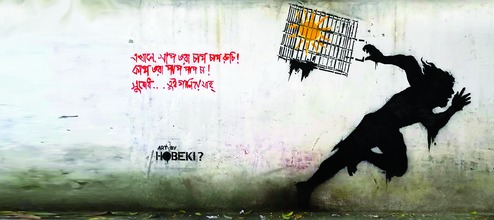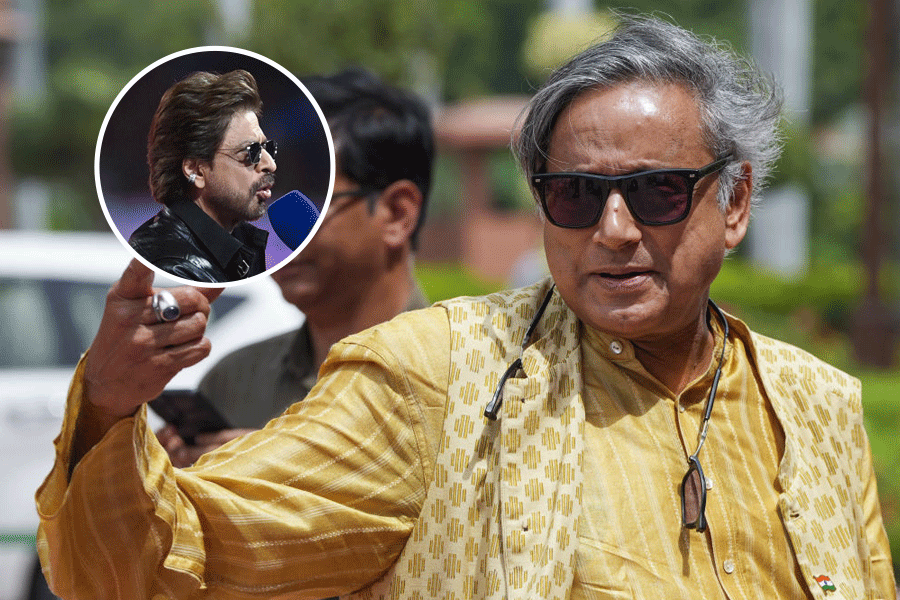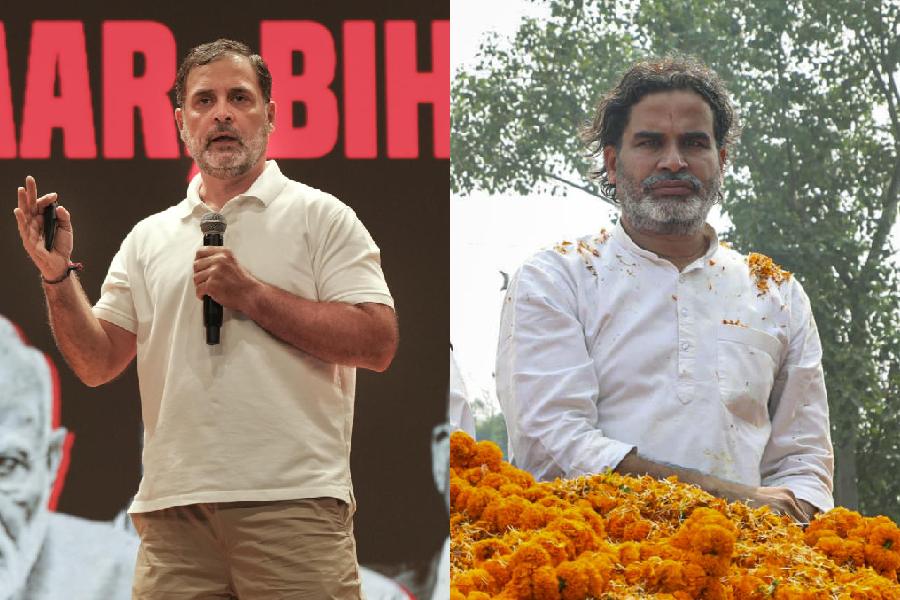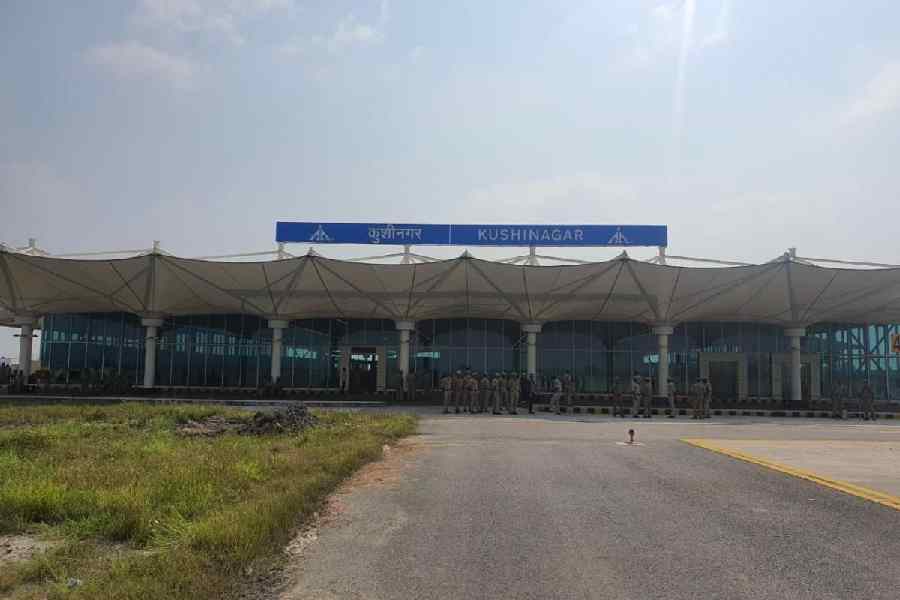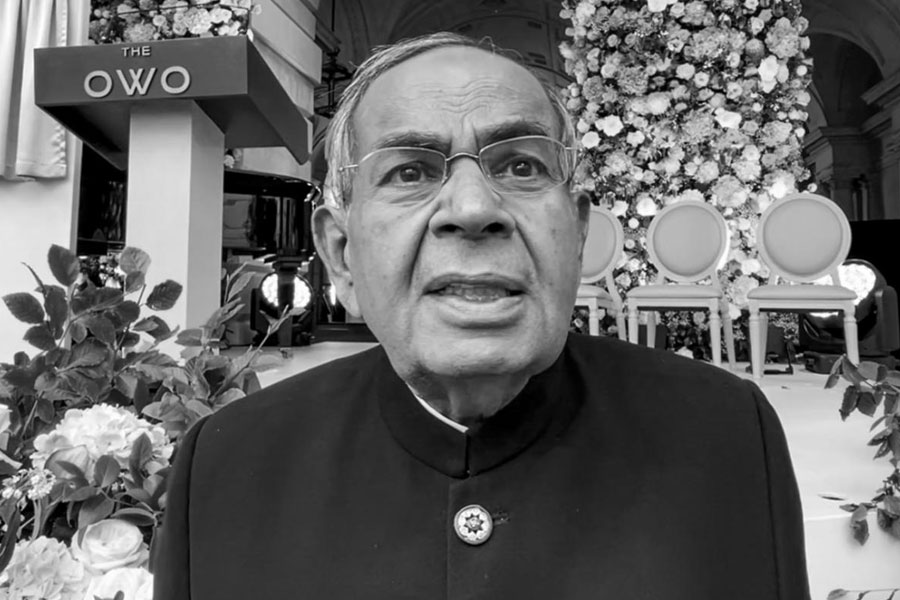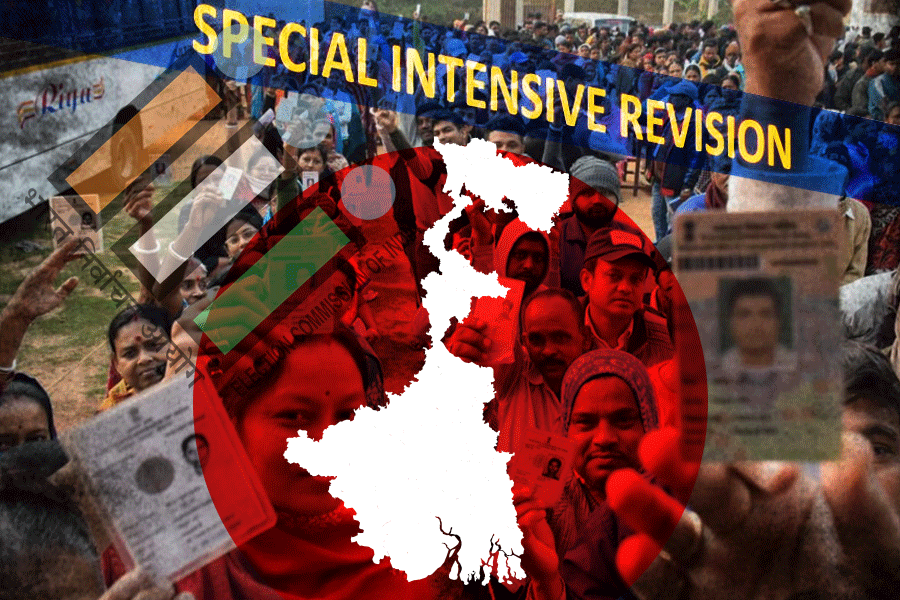


These walls need your ears. At the beginning of 2017, the walls of Dhaka broke out into a chatter. The very first utterance, most likely, was a visual that appeared in the city's Agargaon area. It showed a full-bodied man - flashing eyes, floating hair, bare torso, a cage under his right arm...
The artist had deliberately smudged the black paint defining the contours of the human form for effect. The caged sun, fabulously red, glowered through the mesh. To the left of the drawing were three English letters in blood red - FOL. The O filled in, looked like a miniature sun. In conjunction with the image of the sun, it read FOLO. Was the man with the furtive backward glance inviting his audience to follow? Possible.
To the right of the image were the following words in Bengali - Subodh tui paliye ja, and by way of a footnote - Tor bhagye kichhu nei. Someone or many seemed to be urging the man in the graffiti - Subodh - to run away. The aside translates thus - there is nothing for you here, Subodh.
Bangladeshi media has been all agog about this graffiti. Who is behind these drawings? Who does Subodh represent? Why is he being asked to run away? The questions swirl. The answers, disparate, floating in the air and on the web, have to be pieced together.
Annando Kutum, currently an undergraduate student at a Calcutta college, is from Kushtia in Bangladesh. Just back from a brief holiday home, Annando talks about the " bhayankar situation" in Bangladesh. He talks about the draconian Article 57 of the ICT Act - similar to Section 66A of India's Information Technology Act struck down in 2015. "If I perceive you as a threat, I can slap a case. It is arbitrary. There is no freedom of speech. You can't talk to the media. You can't voice views on social media. You can't blog."
This is Subodh's immediate context.
"Subodh is possibly a reference to our good senses, our good intentions," writes Fuad al Abir in Roar Bangla, a Bangladeshi news portal. He directs us to the Facebook (FB) page of Faisal Arefin, an assiduous compilation of the Subodh narrative.
Between April and now, many more of the Subodh drawings seem to have appeared in different parts of the city that is the capital of Bangladesh. On the outer wall of the old airport in Tejgaon, in Dhanmondi, outside Dhaka University...
Subodh sitting on his haunches, hand on head, despondent. Subodh picking up the cage. Subodh breaking into a run. Subodh behind bars. The artist's lines sensitive, trembling, as if with some unknown terror. The sun, the lone constant. Sometimes golden yellow, sometimes the shape of a beating heart; but always, always, in a cage. The messages are plaintive, insistent - Subodh must leave because the times are not in his favour, because people have forgotten to love... Run, Subodh, run...
The subsequent images have a signature scribbled on the side, in English letters in black - HOBEKI. At times, all too appropriately it is followed by a question mark. In Bengali, hobeki means - will it happen?
Look closely and " hobeki" is a question that contains a question - ki hobe or what will happen? Conjecture is futile; it makes more sense to dwell on what's happened and is unravelling.
From the walls of Dhaka to FB walls, Subodh has surfaced all over social media. Something has resonated with the Bangladeshi youth.
Both Tanjhina Rahman and Shahriar Akash have composed poems on Subodh. Both of them have just completed their school-leaving exams and are getting ready for college.
Writes Tanjhina, "Subodh tui kandish keno?/Paliye jete koshto hoy?...Why the tears Subodh? Does it hurt to leave behind all this?" Akash's poem is brief but biting. He writes, "Subodh tui ebar pala/Shomoyta tor shokhye nei/Surjo mutho-e janle ora/ Subodh , tor aar rokkhe nei... Run, Subodh, run, for times are unfriendly/And god help you if they know the sun is in your safe-keeping."
A recently released film in Bangladesh used the graffiti for promotion and elicited criticism. Subodh is not to be commercialised, many protested. Someone else has written a post saying he is waiting for Subodh to appear on some wall close to where he is.
But really, who is Subodh? A representative of the economically marginalised or a victim of inter-communal strife, offers Akash. A representation of humanity under siege, says Tanjhina.
Annando says Subodh reminds him of Biswajit Das, the 24-year-old Hindu tailor who was hacked to death by members of the Bangladesh Chhatra League - the ruling Awami League's student body - in 2012. It was strike day and mistaking Biswajit for a member of the opposition group, Shibir, they killed him in full public view. Only last week, the high court in Dhaka upheld death for two.
Says Annando, "As they struck him with the ramda or cleaver again and again, he kept saying he was not from Shibir, that he was a Hindu. There is an image of him trying to run away, escape his attackers. One of the initial sketches of Subodh, arms flailing, reminded me of Biswajit."
In the meantime, Subodh has appeared in Calcutta too. In Dhaka, Subodh's creator might be an enigmatic figure. Fuad cautions, "The FB page Hobeki isn't authentic. Hobeki isn't a cheap fame-seeker, I think." But no mystery surrounds the identity of the makers here. Students of Presidency and Jadavpur universities - where the graffiti has appeared - have adapted Hobeki's Subodh to voice their issues, fight their fights.
The walls outside Presidency University's Baker Building are a reddish-black smudge. Only one wall has a "live" Subodh graffiti on it at the time of writing this piece. A human form clutching at a branch with one hand and the caged sun in the other. The Bengali letters below it read - Subodh tokey thamte hobei/ Hemanta aranye aante hobei/Basanta... Subodh you have to stay/In a bare, bare land you have to herald spring.
Arkopaul Dutta is a Master's student from Presidency's Bengali department. He tells The Telegraph that the Subodh drawings appeared in the university sometime mid-July. "We came to know of Subodh from the Dhaka graffiti, but he is not a country-specific icon. He is an icon of protest." According to Arko, Subodh's protest here is against undemocratic principles in cosms, micro as well as macro.
The very first graffiti, apparently, was in sync with the Dhaka series, urging Subodh to run. It was erased. The single act, Midas-like transformed the tone of the students' graffiti movement. The slogan now was Subodh tui palash na kothao/Tor bhagye lodai lekha... Stay, Subodh, stay. You are destined to fight battles. "After continuous resistance, the college authorities made it known that they would not be erasing the graffiti," says Arko.
We learn from Jadavpur student Pratik Karmakar's FB post that Subodh has appeared on the walls of the TT room of the Faculty of Engineering and Technology Students' Union. The slogan, Subodh tui lode ja, aaposh tokey manay na... Fight it out, Subodh. Compromises do not become you." An echo of the Presidency war cry, only different battle.
Says Pratik, "It's being used as a call to stick with the movement until our demands are met." He is referring to the students' opposition to the Trinamul government's decision to curb the powers of students union members. The West Bengal Universities and Colleges (Administration and Regulation) Act was passed in February with a follow-up notification in June saying no more political students' unions, only apolitical councils.
Shahriar Kabir is a Bangladeshi journalist-cum-filmmaker. Over phone from Dhaka, he talks about the Sixties when graffiti bloomed on the walls of Calcutta and Dhaka. He is amused at the curiosity about Subodh's creator. " Tarun ra korey. Taarunyer uchchhash. Taarunyer aabeg. Taarunyer kshobh... All unmistakable expressions of youth," he says. He talks about the graffiti culture of New York, Latin America. Others have compared Hobeki to Banksy, an anonymous graffiti artist whose street art became popular in England of the 1990s.
It has been pointed out that stencils have been used in the Dhaka series - for speed. Just what the anonymous artist needs. The graffiti here are handpainted.
Pratik, who was one of those who spread the word about Subodh here, says he has heard it being discussed that by adapting Subodh, JU may have compromised or denied the art and creativity of Hobeki. "Not at all. We acknowledge Hobeki's original iconography. We have merely reinterpreted Subodh," says the final-year engineering student.
Recently, a second graffiti has come up in JU. There is no Subodh here, only sun and cage. The cage door is ajar and the sun has almost floated out. The artist has scratched some birds in flight and next to it these words: Subodh tui chhoriye ja. Paliye jaoya tor dharma noy... Spread out, Subodh, fan out. Running away is not your dharma. Says its creator and 2016 pass-out from the Chemical Engineering department, Somakraj Banerjee: "The Dhaka series tried to appeal to one's hopelessness. We wanted to appeal to hope." He has signed it #Hochche.
It is already happening.

